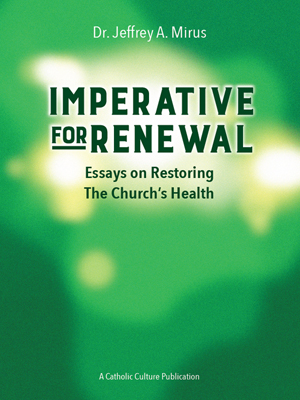A Behind the Scenes Look
By Jennifer Gregory Miller ( bio - articles - email ) | Sep 23, 2022 | In The Liturgical Year
It has been a little over a year since I took on an expanded role with the Catholic Culture Liturgical Year section. Darden Brock has worked for years on keeping all the liturgical days updated. The liturgical calendar changes a bit every year, so it requires tweaking every new liturgical year. She is still working on supporting this section, especially with graphics and she is continuing to update the library. But I am now in charge of updating the Liturgical Year section.
I thought I would check in and give a little behind-the-scenes peek on we are doing on the site this past year, especially as we enter our Fall Campaign.
We have been slowly revising and updating. It didn’t need an overhaul, but we are doing a few additions and tweaks. The first area is just checking and updating all the links. It seems the pandemic forced the shutdown of quite a few websites.
Liturgical Focus
The goal for each liturgical day is to know at-a-glance what is the feast for the day—being able to connect in universal prayer with the whole Mystical Body.
We have been adding some Mass propers (Entrance Antiphon, Communion Antiphon, Preface, Alleluia Verse, etc.) and occasional excerpts from the Mass readings. We follow the current General Roman Calendar, and the particular USA National Calendar feast days. Occasionally a special feast day in another country might be highlighted, but it’s marked for that particular calendar. The national saints will be marked with a country abbreviation, such as USA, CAN, SCOT, ENG, etc.
Each Liturgical Day has a blue box which has links to further recipes, activities, prayers, etc. connected to the feast day. We have expanded this area to include library articles, Catholic Culture Podcasts and blog posts that are related. James Majewski, Thomas Mirus and Mike Aquilina keep adding wonderful content that often connects to the Liturgical Year.
Over the years, Catholic Culture has presented different saints for each day of the year, even if it the saint wasn’t celebrated on the current calendar. The change this year is to align all the included saints with the latest edition (2004) of the Roman Martyrology. We are also trying to keep adding in the newer saints and blesseds since 2004. There are a few feasts that are no longer in the Roman Martyrology, but are included because they are interesting both historically and devotionally. Saints found in the Roman Martyrology are marked with a “(RM)” and those outside of other calendars are marked as “(Hist).”
Additional Touches
There are other areas that have some complementary features. In addition to the current meditations, the plan is to expand some meditations for the different liturgical seasons, such as Advent, Christmas, Lent and Easter. This is a work in progress.
There has already been a feature of Station Churches during the season of Lent and first week of Easter. But there are other days that have traditional Station Churches, such as during Advent, Christmas, and Ember Days. These are slowly being added throughout the Liturgical Year to give that “Roman perspective” for these days.
The Ember Days for the traditional quarterly Ember Days are being expanded. Ember Days are not abolished in the current calendar, although they do look a little different liturgically. Many of us who live in urban and suburban areas are more disconnected from God and nature and seasons, and the Ember Days are a wonderful way to bring a reminder of that connection.
Finally, last Advent the Jesse Tree section was updated and expanded.
Visual Differences and Keys to the Code
Even more behind the scenes, Dr. Jeff Mirus has been coding a few pages and programs to make it easier to update everything. I’ve been able to find text, accidental duplications and other errors with ease and update each liturgical day much faster. He even solved our ongoing problem with accent marks and special characters.
Visually the top half of each liturgical page now has the feast or saints’ names bolded. The birth and death dates (when they are known) are included, so a reader can get an immediate historical perspective.
The Collect Prayers now have a title for the connected feast day, which makes it a little easier to follow along when there are several liturgical choices.
Finally, the monthly calendar has a particular formatting code to visually recognize what is the feast of the day:
- Sundays and Solemnities=ALL CAPS
- Feasts=Bold
- Memorials=Regular Font
- Optional Memorial=Italics
This key is similar to the typical parish wall calendars. The approach provides an essential approach. For my family, we have tried to attend Mass on higher feast days. Being able to see right away which are the solemnities and feasts for the month.
We appreciate when readers write and give feedback and corrections—it helps our work, too. There are few other plans to expand, add and refine over time, and suggestions are always welcome. We hope you find the updates useful for your daily reading.
All comments are moderated. To lighten our editing burden, only current donors are allowed to Sound Off. If you are a current donor, log in to see the comment form; otherwise please support our work, and Sound Off!








